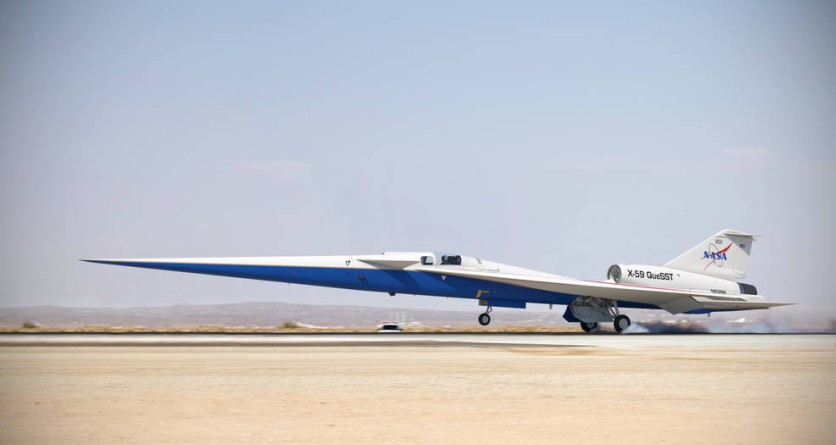
NASA is finally ready to set the launch of its first piloted X-plane (x stands for experimental) after three decades. The X-59 is expected to take its flight as early as 2021. Designed by defense contractor Lockheed Martin, the X-59 Quiet Supersonic Technology Aircraft (shortened to QueSST), is designed to elevate supersonic travel. All aircraft that break the sound barrier trigger a large deafening sound, known as a sonic boom. This sonic boom can loudly be heard throughout the breakthrough point, which is one of the primary complaints as to why supersonic aircraft were not widely considered after the retirement of the Concorde in the early 200s. The QueSST is designed that it is able to go into supersonic speeds without causing the boom. The QueSST is expected to fly at 940 MPH at 55,000 feet, greatly reducing its audio footprint. In comparison, the Concorde usually flew at an altitude of 60,000 feet with speeds of around 1320 MPH.
The QueSST is expected to produce sonic "thumps" of around 75 perceived Level decibels, compared to the Concorde's 120 to 125 levels.
A rather short history of the development
The path of the X-59's development, unlike other projects, has primarily been on track for the most part. The project is part of the Low Boom Flight Demonstrator Program, which itself is part of NASA's Integrated Aviation Systems Program. Lockheed Martin was awarded a preliminary design contract back in February 2016, with NASA finally awarding the company a full contract in April 2018 worth $247.5 Million.
In November of that year, NASA began gathering feedback. They paid around 400 residents $25 per week to partake in the study, which took place in different locations. Noise sensors were also used in the study.
In May 2019, the major structural parts began production, as well as scale-model tests, were done in high-speed wind tunnels located at NASA Glenn Research Center.
New Technologies for a New Generation of Aircraft
With the Concorde being developed in the 1960s, aviation has come a long way since then. Part of the QueSST's testing will involve new technological upgrades. The X-59's shape, with its elongated "beak", is the result of decades of research done by NASA's scientists. It looks very much a pelican's beak, which would affect the shock waves that are created when the X-59 moves at supersonic speeds. The shape is also the key to reducing the "sonic boom" into a "sonic thump."
The X-59 will also be the testbed of the eXternal Visibility System (XVS). One of the weakest points of a supersonic aircraft is the cockpit, as windows cause structural differences in the fuselage, which could possibly induce drag. With the XVS, the front-facing windows are replaced by a super high-resolution camera (the current camera used uses 4k resolution). Pilots, instead of looking ahead through the window, can look at the monitors in the now window-less cockpits. The idea for a windowless cockpit isn't something new. Airbus introduced a patent using a windowless cockpit in 2014. NASA also tested the concept back in 1996.




![Most Useful Google Chrome Keyboard Shortcuts You Need to Know to Improve Your Browsing Experience [2024]](https://d.techtimes.com/en/full/449047/most-useful-google-chrome-keyboard-shortcuts-you-need-know-improve-your-browsing-experience-2024.jpg?w=184&h=103&f=476d29fd60df70a67f6679f99a2ca6d0)